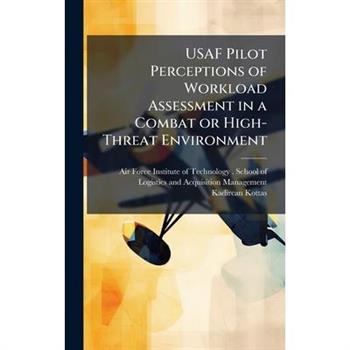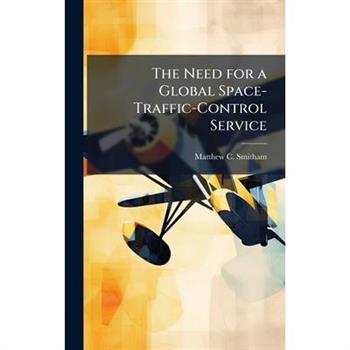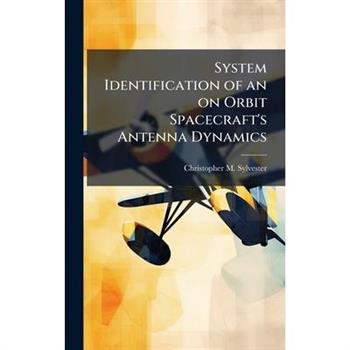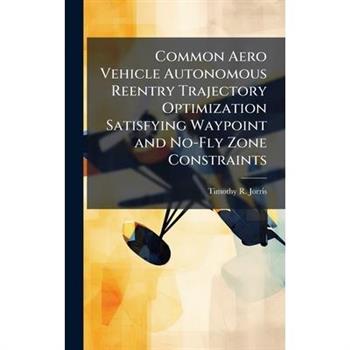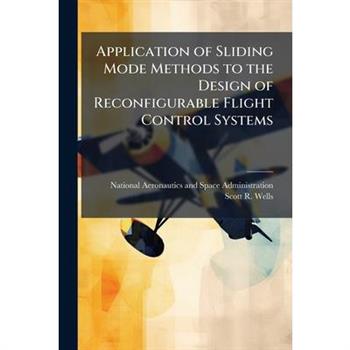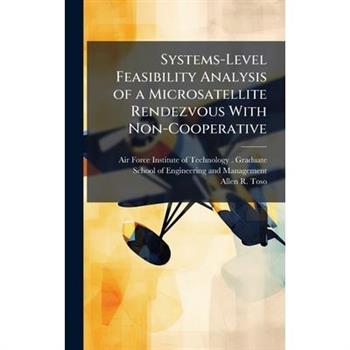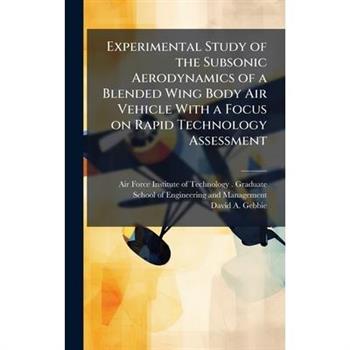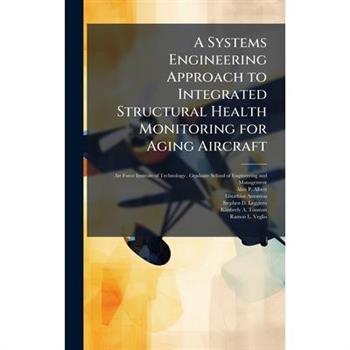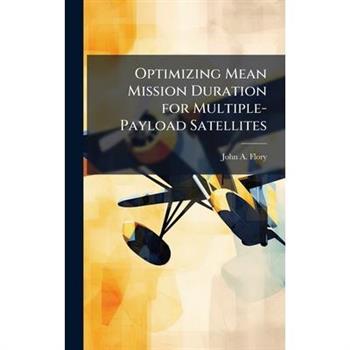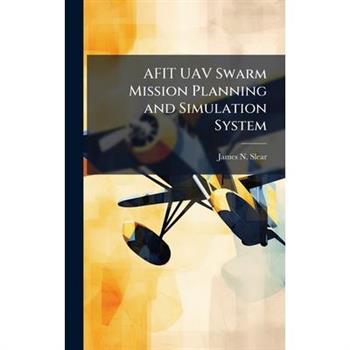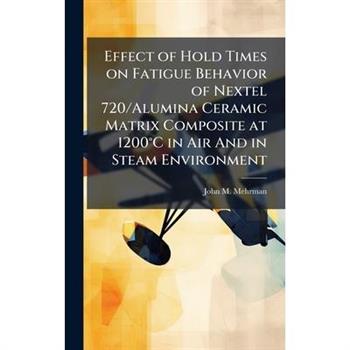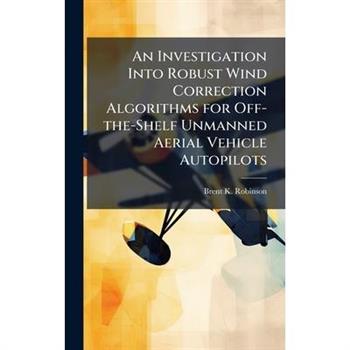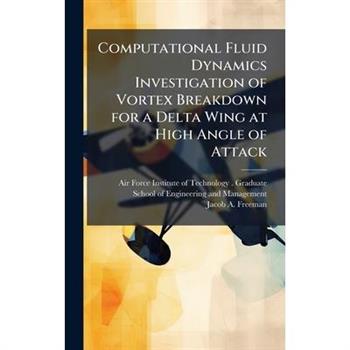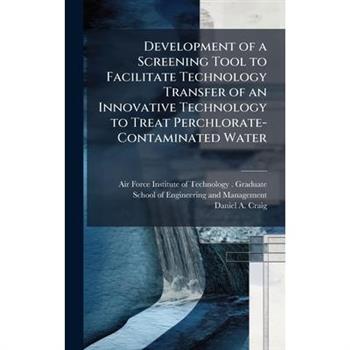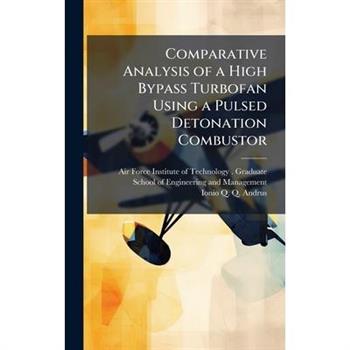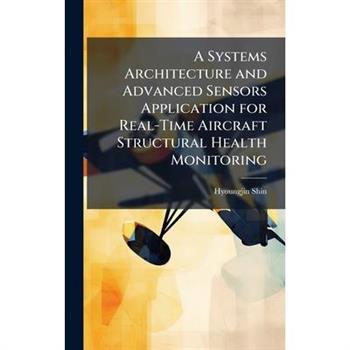USAF Pilot Perceptions of Workload Assessment in a Combat or High-Threat Environment
This study analyzed the self-reported survey responses of 219 Air Force Pilots concerning their perceptions of workload assessment in a combat or a high-threat environment. The first objective of this study was to determine and compare the combat workload factors of varying importance in combat workload assessment by aircraft and mission type flown. The second objective was to examine the pilots' perception of combat mission in-flight workload. A stepwise regression model to predict the pilots' perceptions of in-flight workload using pilots' characteristic data was explored. Research conclusion varied among aircraft types. Combat workload items indicated, as "distractingly" important were similar for all aircraft types, while items in lower level of importance were impacted by aircraft type. Mean Combat Workload (CWL) scores of pilots from each aircraft type were not significantly different. Overall, it was concluded that surveying pilots who had flown in combat or high-threat environments provided useful responses to assess pilot workload; however, findings based on subjective assessments, provide tentative grounds for further research.This work has been selected by scholars as being culturally important, and is part of the knowledge base of civilization as we know it. This work was reproduced from the original artifact, and remains as true to the original work as possible. Therefore, you will see the original copyright references, library stamps (as most of these works have been housed in our most important libraries around the world), and other notations in the work.This work is in the public domain in the United States of America, and possibly other nations. Within the United States, you may freely copy and distribute this work, as no entity (individual or corporate) has a copyright on the body of the work.As a reproduction of a historical artifact, this work may contain missing or blurred pages, poor pictures, errant marks, etc. Scholars believe, and we concur, that this work is important enough to be preserved, reproduced, and made generally available to the public. We appreciate your support of the preservation process, and thank you for being an important part of keeping this knowledge alive and relevant.
Autonomous Air Refueling for Unmanned Aircraft Systems
Air Refueling (AR) demonstrates its critical importance on a daily basis in combat and peacetime missions all over the world. It is a crucial link enabling the global reach the US Air Force needs to fly, fight and win the current Global War on Terrorism (GWOT) and conduct various other missions in support of the US Military Strategy. Despite its critical importance to airpower, AR technology has changed little in the last 50 years. The Air Force uses the same basic refueling systems designed for Strategic Air Command (SAC) over a half-century ago. These systems require a heavy workload by the receiver pilot either maintaining position in a tight refueling envelope for the Boom System or actually making and maintaining a contact with the Probe and Drogue System. With unmanned platforms playing a larger role in the Intelligence, Surveillance and Reconnaissance (ISR) role and envisioned to one day replace the manned fighter, a system which can accomplish air refueling autonomously is being sought to enable the next generation of combat and ISR aircraft to safely conduct AR. The purpose of this research is to accomplish a cost/benefit analysis of air refueling Unmanned Aircraft Systems (UAS) used as ISR platforms, specifically high altitude endurance (HAE) class UAS such as the Global Hawk. Currently two different AAR systems are being developed and tested independently by the Air Force Research Lab (AFRL) and the Defense Advanced Research Projects Agency (DARPA) in conjunction with the Sierra Nevada Corporation. This research is not intended to determine the superiority of one system over the other however; it is only intended to weigh the benefits and costs of the AAR concept as a whole.This work has been selected by scholars as being culturally important, and is part of the knowledge base of civilization as we know it. This work was reproduced from the original artifact, and remains as true to the original work as possible. Therefore, you will see the original copyright references, library stamps (as most of these works have been housed in our most important libraries around the world), and other notations in the work.This work is in the public domain in the United States of America, and possibly other nations. Within the United States, you may freely copy and distribute this work, as no entity (individual or corporate) has a copyright on the body of the work.As a reproduction of a historical artifact, this work may contain missing or blurred pages, poor pictures, errant marks, etc. Scholars believe, and we concur, that this work is important enough to be preserved, reproduced, and made generally available to the public. We appreciate your support of the preservation process, and thank you for being an important part of keeping this knowledge alive and relevant.
Design of a Space-Borne Autonomous Infrared Tracking System
Complete characterization of the space environment in support of the United States' goal of Space Situational Awareness is not currently achievable. When confronted with recent increases in the deployment and miniaturization of microsatellites by numerous nations, the questions of foreign space capabilities are magnified. This study sought to determine the feasibility of and experimentally demonstrate a microsatellite capability to autonomously loiter about and track a target satellite. Various methods of passive remote sensing were investigated to determine the best means of detecting and tracking a target in space. Microbolometer-based infrared sensors were identified as the best sensor for several reasons, primarily due to their ability to track in the absence of light. A representative system was constructed for demonstration in AFIT's SIMSAT laboratory. Software modeling results identified open-loop instability, and therefore the requirement for closed-loop control. A simple PD control algorithm served as the basis for control, and a pseudo-feed-forward term was added to improve the results. The feed-forward term was derived form orbital dynamics as the rate at which the chase satellite traverses around an ellipse formed in the target's frame of reference. Reduction in pointing errors of up to 67% were found in simulations. Non-optimal yet successful tracking results were obtained in the laboratory with a hardware-in-the-loop model for both step and moving inputs. With minor modification, this infrared tracking system could be implemented onboard a microsatellite.This work has been selected by scholars as being culturally important, and is part of the knowledge base of civilization as we know it. This work was reproduced from the original artifact, and remains as true to the original work as possible. Therefore, you will see the original copyright references, library stamps (as most of these works have been housed in our most important libraries around the world), and other notations in the work.This work is in the public domain in the United States of America, and possibly other nations. Within the United States, you may freely copy and distribute this work, as no entity (individual or corporate) has a copyright on the body of the work.As a reproduction of a historical artifact, this work may contain missing or blurred pages, poor pictures, errant marks, etc. Scholars believe, and we concur, that this work is important enough to be preserved, reproduced, and made generally available to the public. We appreciate your support of the preservation process, and thank you for being an important part of keeping this knowledge alive and relevant.
Identifying and Mitigating the Risks of Cockpit Automation
Cockpit automation has delivered many promised benefits such as improved system safety and efficiency, however, at the same time it has imposed system costs that are often manifest in the forms of mode confusion, errors of omission, and automation surprises. An understanding of the nature of these costs as well as associated influencing factors is necessary to adequately design the future automated systems that will be required for Air Mobility Command aircraft to operate in the future air traffic environment. This paper reviews and synthesizes Human Factors research on the costs of cockpit automation. These results are interpreted by modeling the automated cockpit as a supervisory control system in which the pilot works with, but is not replaced by, automated systems. From this viewpoint, pilot roles in the automated cockpit provide new opportunities for error in instructing, monitoring, and intervening in automated systems behavior. These opportunities for error are exacerbated by the limited machine coordination capabilities, limits on human coordination capabilities and properties of machine systems that place new attention and knowledge demands on the human operator. In order to mitigate the risks posed by these known opportunities for error and associated influencing factors, a system of defenses in depth is required involving integrated innovations in design, procedures, and training. The issues raised in this paper are not specific to transport aircraft or the broader aviation domain, but apply to all current and future highly automated military systems.This work has been selected by scholars as being culturally important, and is part of the knowledge base of civilization as we know it. This work was reproduced from the original artifact, and remains as true to the original work as possible. Therefore, you will see the original copyright references, library stamps (as most of these works have been housed in our most important libraries around the world), and other notations in the work.This work is in the public domain in the United States of America, and possibly other nations. Within the United States, you may freely copy and distribute this work, as no entity (individual or corporate) has a copyright on the body of the work.As a reproduction of a historical artifact, this work may contain missing or blurred pages, poor pictures, errant marks, etc. Scholars believe, and we concur, that this work is important enough to be preserved, reproduced, and made generally available to the public. We appreciate your support of the preservation process, and thank you for being an important part of keeping this knowledge alive and relevant.
The Need for a Global Space-Traffic-Control Service
Losing a satellite to an accidental on-orbit collision is no longer hypothetical, but real and increasingly likely. As a result, the need for global space-traffic control must be addressed by the space-faring nations, especially the United States. The fiscal and national security ramifications are too significant to ignore. The replacement cost of a satellite, perhaps hundreds of millions of dollars, is the most obvious impact. But, this may be the most trivial consideration. The greatest concern is the potential catastrophic loss of vital communications, navigation, weather, and other services we depend on for daily global commerce and defense. As a matter of national prestige, leadership and security, the US Government should endeavor to establish an international institution to govern global space traffic. As in 1944, the United States should convene a similar international conference with the purpose to establish such a service like the ICAO.This work has been selected by scholars as being culturally important, and is part of the knowledge base of civilization as we know it. This work was reproduced from the original artifact, and remains as true to the original work as possible. Therefore, you will see the original copyright references, library stamps (as most of these works have been housed in our most important libraries around the world), and other notations in the work.This work is in the public domain in the United States of America, and possibly other nations. Within the United States, you may freely copy and distribute this work, as no entity (individual or corporate) has a copyright on the body of the work.As a reproduction of a historical artifact, this work may contain missing or blurred pages, poor pictures, errant marks, etc. Scholars believe, and we concur, that this work is important enough to be preserved, reproduced, and made generally available to the public. We appreciate your support of the preservation process, and thank you for being an important part of keeping this knowledge alive and relevant.
Wind Tunnel Analysis and Flight Test of a Wing Fence on a T-38
A low-speed wind tunnel study and flight tests were performed to examine the effects of a wing fence on the T-38A. Wind tunnel results were based upon force and moment data collected with a six-component balance and flow visualization at Reynolds numbers up to 0.3 x 106, based on mean aerodynamic chord. The model did not include the last 7.79 feet of the aircraft, and the engine and exhaust were modeled as through-holes. Five fence geometries, placed at wing station 125 ( 0.825 semispan), were compared. The best performer of these designs, based on drag polar, was the fence that wrapped the leading edge and extended 84.6 percent of the local chord length along the wing's upper surface. Wind tunnel data showed that this fence increased the lift coefficient by up to 6.3 0.6 percent and reduced spanwise and separated flow outboard the fence. The flight-tested fence was based on the best performing fence design from the wind tunnel study. The results were based on aircraft instrumentation and flow visualization at Reynolds numbers up to 9.98 x 106. It was inconclusive whether the fence caused an increase in lift coefficient. The fence reduced the roll-off tendency and wing rock during approaches to stall. Tuft visualization on the aircraft wing suggested that the fence reduced spanwise and separated flow outboard the fence, which agreed with the wind tunnel results.This work has been selected by scholars as being culturally important, and is part of the knowledge base of civilization as we know it. This work was reproduced from the original artifact, and remains as true to the original work as possible. Therefore, you will see the original copyright references, library stamps (as most of these works have been housed in our most important libraries around the world), and other notations in the work.This work is in the public domain in the United States of America, and possibly other nations. Within the United States, you may freely copy and distribute this work, as no entity (individual or corporate) has a copyright on the body of the work.As a reproduction of a historical artifact, this work may contain missing or blurred pages, poor pictures, errant marks, etc. Scholars believe, and we concur, that this work is important enough to be preserved, reproduced, and made generally available to the public. We appreciate your support of the preservation process, and thank you for being an important part of keeping this knowledge alive and relevant.
Attitude Model of a Reaction Wheel/Fixed Thruster Based Satellite Using Telemetry Data
Attitude determination of satellites is normally the job of inertial instruments, such as gyroscopes, or through sensing instruments, such as star trackers orGlobal Positioning Satellites (GPS). Satellite health monitoring systems watch and determine if the satellite deviates from its normal operating attitudeorientation. Knowing the orientation of a satellite is essential in being able to control it in order to complete the satellite's designated mission. While there area multitude of ways to determine a satellite's orientation, very little research has been done on determining if the attitude of a satellite can be determineddirectly from telemetry data of the attitude control systems and an accurate spacecraft model. The fidelity of a satellite attitude determination model requiredto get reasonable predictions from using only telemetry data of the attitude controllers, such as thruster on/off indicators and reaction wheel rotor speeds, isinvestigated. Experimental tests using telemetry data received from the Air Force Institute of Technology's (AFIT) Simulated Satellite, SimSat, is used inverifying a Matlab model which outputs SimSat's orientation from SimSat's reaction wheel and thruster telemetry data. Software modeling results showed thatit is possible to determine a satellite's attitude from only the attitude controllers' telemetry data when the satellite's dynamic model is known.This work has been selected by scholars as being culturally important, and is part of the knowledge base of civilization as we know it. This work was reproduced from the original artifact, and remains as true to the original work as possible. Therefore, you will see the original copyright references, library stamps (as most of these works have been housed in our most important libraries around the world), and other notations in the work.This work is in the public domain in the United States of America, and possibly other nations. Within the United States, you may freely copy and distribute this work, as no entity (individual or corporate) has a copyright on the body of the work.As a reproduction of a historical artifact, this work may contain missing or blurred pages, poor pictures, errant marks, etc. Scholars believe, and we concur, that this work is important enough to be preserved, reproduced, and made generally available to the public. We appreciate your support of the preservation process, and thank you for being an important part of keeping this knowledge alive and relevant.
Technology Transfer
Everyday within United States Air Forces' research laboratories there are hundreds of scientists and engineers whose research and development activities contribute to the advancement of science and technology for mankind. The opportunities for successful technology transfer within these research activities are unbounded. This thesis examines the Air Force Office of Research and Technology Applications (ORTA's) involvement with technology transfer, the complexities they face, the importance of their position, and what best practices ORTAs use to facilitate technology transfer. Air Force concerns and initiatives are detailed to provide perspective on balancing technology transfer with mission requirements and adherence to United States law. Legislative requirements mandate laboratories to transfer federally developed technologies to the commercial sector. Research indicates that several Air Force organizations routinely experience successful technology transfer more frequently than other Air Force organizations. The literature review indicates that historically, technology transfer from DoD has been predominantly passive.This work has been selected by scholars as being culturally important, and is part of the knowledge base of civilization as we know it. This work was reproduced from the original artifact, and remains as true to the original work as possible. Therefore, you will see the original copyright references, library stamps (as most of these works have been housed in our most important libraries around the world), and other notations in the work.This work is in the public domain in the United States of America, and possibly other nations. Within the United States, you may freely copy and distribute this work, as no entity (individual or corporate) has a copyright on the body of the work.As a reproduction of a historical artifact, this work may contain missing or blurred pages, poor pictures, errant marks, etc. Scholars believe, and we concur, that this work is important enough to be preserved, reproduced, and made generally available to the public. We appreciate your support of the preservation process, and thank you for being an important part of keeping this knowledge alive and relevant.
System Identification of an on Orbit Spacecraft's Antenna Dynamics
The research presented here is a follow on to previous efforts [Pachter, Barba, 2007] in which a tight control loop was designed to meet performance specifications while minimizing the control gains of a spacecraft mounted flexible antenna. Emphasis is now shifted to system identification in order to increase nominal plant knowledge, estimate plant uncertainty bounds, as well as determine the disturbance band. Knowledge of the plant dynamics along with the corresponding uncertainty bounds will provide for the design of a control system which meets the specifications (tracking and disturbance rejection) while at the same time employing the lowest possible gain. This in turn is conducive to sensor noise disturbance rejection, avoidance of actuator saturation, and excitation of high frequency modes.This work has been selected by scholars as being culturally important, and is part of the knowledge base of civilization as we know it. This work was reproduced from the original artifact, and remains as true to the original work as possible. Therefore, you will see the original copyright references, library stamps (as most of these works have been housed in our most important libraries around the world), and other notations in the work.This work is in the public domain in the United States of America, and possibly other nations. Within the United States, you may freely copy and distribute this work, as no entity (individual or corporate) has a copyright on the body of the work.As a reproduction of a historical artifact, this work may contain missing or blurred pages, poor pictures, errant marks, etc. Scholars believe, and we concur, that this work is important enough to be preserved, reproduced, and made generally available to the public. We appreciate your support of the preservation process, and thank you for being an important part of keeping this knowledge alive and relevant.
Formation Flight Control for Aerial Refueling
A controller is designed for an aircraft to autonomously fly formation during aerial refueling. Requirements for a refueling autopilot are stated. A six-degree-offreedom model is developed for an F-16 lead aircraft and a Learjet LJ-25 wing aircraft. Bare airframe stability of both aircraft is investigated, and stability augmentation is performed. A Matlab Simulink simulation is built to reproduce the sensor inputs that will be available to the wing aircraft in flight, including disturbances. Control frames are investigated to determine the optimum presentation of the error vector for control during the task of air refueling. Control laws are developed from the initial premise of proportional-plus-integral control on position error only, and made more complex until desired performance is achieved. Tanker flight profiles are designed for the lead aircraft, and simulations are accomplished to estimate controller performance. Stability and robustness are investigated through the addition of noise, turbulence, and time delays while exploring the capability limits during increasingly aggressive profiles. Modifications for flight test are described, and flight test results are reviewed from 7 formation flights of a USAF C-12 and a Learjet LJ-25 under fully autonomous control in an operationally representative refueling environment. Actual controller performance is analyzed and compared to predictions, and suggestions are made for future controllers.This work has been selected by scholars as being culturally important, and is part of the knowledge base of civilization as we know it. This work was reproduced from the original artifact, and remains as true to the original work as possible. Therefore, you will see the original copyright references, library stamps (as most of these works have been housed in our most important libraries around the world), and other notations in the work.This work is in the public domain in the United States of America, and possibly other nations. Within the United States, you may freely copy and distribute this work, as no entity (individual or corporate) has a copyright on the body of the work.As a reproduction of a historical artifact, this work may contain missing or blurred pages, poor pictures, errant marks, etc. Scholars believe, and we concur, that this work is important enough to be preserved, reproduced, and made generally available to the public. We appreciate your support of the preservation process, and thank you for being an important part of keeping this knowledge alive and relevant.
Common Aero Vehicle Autonomous Reentry Trajectory Optimization Satisfying Waypoint and No-Fly Zone Constraints
To support the Global Strike mission, an autonomous trajectory optimization technique is presented to minimize the flight time, satisfy terminal and intermediate constraints, and remain within the specified vehicle heating and control limitations. "Waypoints" are specified for reconnaissance or multiple payload deployments and "no-fly zones" are specified for geopolitical restrictions or threat avoidance. The Hypersonic Cruise Vehicle (HCV) is used as a simplified two-dimensional platform to compare multiple solution techniques. The solution techniques include a unique geometric approach, an analytical dynamic optimization technique, and a numerical approach. This numerical technique is a direct solution method involving pseudospectral methods and nonlinear programming to converge to the optimal solution. The Common Aero Vehicle (CAV) is used as the test platform for the full three-dimensional reentry trajectory optimization problem. The culmination of this research is the verification of the optimality of this proposed numerical technique, as shown for both the two-dimensional and three-dimensional models. Lastly, user implementation strategies are presented to improve accuracy and enhance solution convergence.This work has been selected by scholars as being culturally important, and is part of the knowledge base of civilization as we know it. This work was reproduced from the original artifact, and remains as true to the original work as possible. Therefore, you will see the original copyright references, library stamps (as most of these works have been housed in our most important libraries around the world), and other notations in the work.This work is in the public domain in the United States of America, and possibly other nations. Within the United States, you may freely copy and distribute this work, as no entity (individual or corporate) has a copyright on the body of the work.As a reproduction of a historical artifact, this work may contain missing or blurred pages, poor pictures, errant marks, etc. Scholars believe, and we concur, that this work is important enough to be preserved, reproduced, and made generally available to the public. We appreciate your support of the preservation process, and thank you for being an important part of keeping this knowledge alive and relevant.
Handbook for Stabilization/Solidification of Hazardous Wastes
The U.S. Environmental Protection Agency (EPA) was introduced on December 2, 1970 by President Richard Nixon. The agency is charged with protecting human health and the environment, by writing and enforcing regulations based on laws passed by Congress. The EPA's struggle to protect health and the environment is seen through each of its official publications. These publications outline new policies, detail problems with enforcing laws, document the need for new legislation, and describe new tactics to use to solve these issues. This collection of publications ranges from historic documents to reports released in the new millennium, and features works like: Bicycle for a Better Environment, Health Effects of Increasing Sulfur Oxides Emissions Draft, and Women and Environmental Health.This work has been selected by scholars as being culturally important, and is part of the knowledge base of civilization as we know it. This work was reproduced from the original artifact, and remains as true to the original work as possible. Therefore, you will see the original copyright references, library stamps (as most of these works have been housed in our most important libraries around the world), and other notations in the work.This work is in the public domain in the United States of America, and possibly other nations. Within the United States, you may freely copy and distribute this work, as no entity (individual or corporate) has a copyright on the body of the work.As a reproduction of a historical artifact, this work may contain missing or blurred pages, poor pictures, errant marks, etc. Scholars believe, and we concur, that this work is important enough to be preserved, reproduced, and made generally available to the public. We appreciate your support of the preservation process, and thank you for being an important part of keeping this knowledge alive and relevant.
Comparison of High Aspect Ratio Cooling Channel Designs for a Rocket Combustion Chamber With Development of an Optimized Design
An analytical investigation on the effect of high aspect ratio (height/width) cooling channels, considering different coolant channel designs, on hot-gas-side wall temperature and coolant pressure drop for a liquid hydrogen cooled rocket combustion chamber, was performed. Coolant channel design elements considered were: length of combustion chamber in which high aspect ratio cooling was applied, number of coolant channels, and coolant channel shape. Seven coolant channel designs were investigated using a coupling of the Rocket Thermal Evaluation code and the Two-Dimensional Kinetics code. Initially, each coolant channel design was developed, without consideration for fabrication, to reduce the hot-gas-side wall temperature from a given conventional cooling channel baseline. These designs produced hot-gas-side wall temperature reductions up to 22 percent, with coolant pressure drop increases as low as 7.5 percent from the baseline. Fabrication constraints for milled channels were applied to the seven designs. These produced hot-gas-side wall temperature reductions of up to 20 percent, with coolant pressure drop increases as low as 2 percent. Using high aspect ratio cooling channels for the entire length of the combustion chamber had no additional benefit on hot-gas-side wall temperature over using high aspect ratio cooling channels only in the throat region, but increased coolant pressure drop 33 percent. Independent of coolant channel shape, high aspect ratio cooling was able to reduce the hot-gas-side wall temperature by at least 8 percent, with as low as a 2 percent increase in coolant pressure drop. ne design with the highest overall benefit to hot-gas-side wall temperature and minimal coolant pressure drop increase was the design which used bifurcated cooling channels and high aspect ratio cooling in the throat region. An optimized bifurcated high aspect ratio cooling channel design was developed which reduced the hot-gas-side wall temperature by 18 percent andThis work has been selected by scholars as being culturally important, and is part of the knowledge base of civilization as we know it. This work was reproduced from the original artifact, and remains as true to the original work as possible. Therefore, you will see the original copyright references, library stamps (as most of these works have been housed in our most important libraries around the world), and other notations in the work.This work is in the public domain in the United States of America, and possibly other nations. Within the United States, you may freely copy and distribute this work, as no entity (individual or corporate) has a copyright on the body of the work.As a reproduction of a historical artifact, this work may contain missing or blurred pages, poor pictures, errant marks, etc. Scholars believe, and we concur, that this work is important enough to be preserved, reproduced, and made generally available to the public. We appreciate your support of the preservation process, and thank you for being an important part of keeping this knowledge alive and relevant.
Application of Sliding Mode Methods to the Design of Reconfigurable Flight Control Systems
Observer-based sliding mode control is investigated for application to aircraft reconfigurable flight control. A comprehensive overview of reconfigurable flight control is given, including, a review of the current state-of-the-art within the subdisciplines of fault detection, parameter identification, adaptive control schemes, and dynamic control allocation. Of the adaptive control methods reviewed, sliding mode control (SMC) appears very promising due its property of invariance to matched uncertainty. An overview of sliding mode control is given and its remarkable properties are demonstrated by example. Sliding mode methods, however, are difficult to implement because unmodeled parasitic dynamics cause immediate and severe instability. This presents a challenge for all practical applications with limited bandwidth actuators. One method to deal with parasitic dynamics is the use of an asymptotic observer in the feedback path. Observer-based SMC is investigated, and a method for selecting observer gains is offered. An additional method for shaping the feedback loop using a filter is also developed. It is shown that this SMC prefilter is equivalent to a form of model reference hedging. A complete design procedure is given which takes advantage of the sliding mode boundary layer to recast the SMC as a linear control law. Frequency domain loop shaping is then used to design the sliding manifold. Finally, three aircraft applications are demonstrated. An F-18/HARV is used to demonstrate a SISO pitch rate tracking controller. It is also used to demonstrate a MIMO lateral-directional roll rate tracking controller. The last application is a full linear six degree-of-freedom advanced tailless fighter model. The observer-based SMC is seen to provide excellent tracking with superior robustness to parameter changes and actuator failures.This work has been selected by scholars as being culturally important, and is part of the knowledge base of civilization as we know it. This work was reproduced from the original artifact, and remains as true to the original work as possible. Therefore, you will see the original copyright references, library stamps (as most of these works have been housed in our most important libraries around the world), and other notations in the work.This work is in the public domain in the United States of America, and possibly other nations. Within the United States, you may freely copy and distribute this work, as no entity (individual or corporate) has a copyright on the body of the work.As a reproduction of a historical artifact, this work may contain missing or blurred pages, poor pictures, errant marks, etc. Scholars believe, and we concur, that this work is important enough to be preserved, reproduced, and made generally available to the public. We appreciate your support of the preservation process, and thank you for being an important part of keeping this knowledge alive and relevant.
The Canning of Foods
"The Canning of Foods," originally published in 1912, offers a detailed look into the methods employed in commercial canning during the early 20th century. Authored by A. W. Bitting, in conjunction with the United States Bureau of Chemistry and the Department of Agriculture, this volume provides valuable insights into the techniques and processes used to preserve food on a large scale. This historical text explores the various steps involved in canning, from preparation and processing to sealing and sterilization. It serves as a fascinating resource for those interested in the history of food technology and the evolution of the food industry. Whether you're a historian, a culinary enthusiast, or simply curious about the past, this book offers a unique glimpse into a bygone era of food preservation.This work has been selected by scholars as being culturally important, and is part of the knowledge base of civilization as we know it. This work was reproduced from the original artifact, and remains as true to the original work as possible. Therefore, you will see the original copyright references, library stamps (as most of these works have been housed in our most important libraries around the world), and other notations in the work.This work is in the public domain in the United States of America, and possibly other nations. Within the United States, you may freely copy and distribute this work, as no entity (individual or corporate) has a copyright on the body of the work.As a reproduction of a historical artifact, this work may contain missing or blurred pages, poor pictures, errant marks, etc. Scholars believe, and we concur, that this work is important enough to be preserved, reproduced, and made generally available to the public. We appreciate your support of the preservation process, and thank you for being an important part of keeping this knowledge alive and relevant.
X-Hale
In conjunction with the Air Force Institute of Technology (AFIT) and the Air Force Research Laboratory (AFRL), the University of Michigan has designed and is currently building a remotely piloted aircraft (RPA) experimental high altitude long endurance (X-HALE) aircraft to collect non-linear aeroelastic data to validate HALE aircraft design codes developed by academia, industry, and the federal government. While X-HALE is representative of HALE aircraft, the manufacturing and evaluation techniques are applicable to larger full size HALE aircraft such as the concepts being developed under Defense Advanced Research Projects Agency's (DARPA's) Vulture program. This paper documents the development of the X-HALE model to date including a history of the programmatic decisions, basic model configuration, geometric considerations, sensor and system architecture, and manufacturing challenges. Lessons learned from the prototyping include the evolutionary growth of X-HALE's joiner blocks and the manufacturing process of the composite wings. Furthermore, late in the design process, a series of aeroelastic simulations using the Nonlinear Aeroelastic Simulation Toolbox (NAST) developed at the University of Michigan demonstrated the need for a rotating vertical/horizontal stabilizer to aid in the recovery of the vehicle from unstable nonlinear coupled lateral dynamic "dutch roll like" motion. The documentation and development of X-HALE is critical to the programmatic goal of providing a complete nonlinear aeroelastic data set for the validation of nonlinear aeroelastic analytical tools for government, industry and academia.This work has been selected by scholars as being culturally important, and is part of the knowledge base of civilization as we know it. This work was reproduced from the original artifact, and remains as true to the original work as possible. Therefore, you will see the original copyright references, library stamps (as most of these works have been housed in our most important libraries around the world), and other notations in the work.This work is in the public domain in the United States of America, and possibly other nations. Within the United States, you may freely copy and distribute this work, as no entity (individual or corporate) has a copyright on the body of the work.As a reproduction of a historical artifact, this work may contain missing or blurred pages, poor pictures, errant marks, etc. Scholars believe, and we concur, that this work is important enough to be preserved, reproduced, and made generally available to the public. We appreciate your support of the preservation process, and thank you for being an important part of keeping this knowledge alive and relevant.
Systems-Level Feasibility Analysis of a Microsatellite Rendezvous With Non-Cooperative
The United States is very dependant upon the use of space. Any threat to our ability to use it as desired deserves significant study. One such asymmetric threat is through the use of a microsatellite. The feasibility of using a microsatellite to accomplish an orbital rendezvous with a non-cooperative target is being evaluated. This study focused on identifying and further exploring the technical challenges involved in achieving a non-cooperative rendezvous. A systems engineering analysis and review of past research quickly led to a concentration on the guidance, navigation, and control (GNC) elements of the microsatellite operation. While both the control laws and orbit determination have been previously evaluated as feasible, the integration of the two remained in question. This research first validated past efforts prior to exploring the integration. Impulsive and continuous thrust control methods, and linear and nonlinear estimator filters were all candidate components to a potential system solution. A simple yet robust solution could not be found to meet reasonable rendezvous criteria, using essentially off-the-shelf technology and algorithms. Results reveal a simple linear filter is a misapplication and will not at all work. A nonlinear filter coupled with either a continuous or impulsive thrust controller was found to get somewhat close, but never close enough to attach to the target satellite. Successful GNC subsystem integration could only be achieved for a very simple case ignoring orbit perturbations such as the earth's oblateness. A top-level system architecture for a non-cooperative rendezvous microsatellite has been developed. The technical complexity, however, requires more complex algorithms to solve the rendezvous problem.This work has been selected by scholars as being culturally important, and is part of the knowledge base of civilization as we know it. This work was reproduced from the original artifact, and remains as true to the original work as possible. Therefore, you will see the original copyright references, library stamps (as most of these works have been housed in our most important libraries around the world), and other notations in the work.This work is in the public domain in the United States of America, and possibly other nations. Within the United States, you may freely copy and distribute this work, as no entity (individual or corporate) has a copyright on the body of the work.As a reproduction of a historical artifact, this work may contain missing or blurred pages, poor pictures, errant marks, etc. Scholars believe, and we concur, that this work is important enough to be preserved, reproduced, and made generally available to the public. We appreciate your support of the preservation process, and thank you for being an important part of keeping this knowledge alive and relevant.
Characterizing the Effect of Chlorine and Chloramines on the US EPA Office of Research and Development Formation of Biofilm in a Simulated Drinking Water Distribution System
The U.S. Environmental Protection Agency (EPA) was introduced on December 2, 1970 by President Richard Nixon. The agency is charged with protecting human health and the environment, by writing and enforcing regulations based on laws passed by Congress. The EPA's struggle to protect health and the environment is seen through each of its official publications. These publications outline new policies, detail problems with enforcing laws, document the need for new legislation, and describe new tactics to use to solve these issues. This collection of publications ranges from historic documents to reports released in the new millennium, and features works like: Bicycle for a Better Environment, Health Effects of Increasing Sulfur Oxides Emissions Draft, and Women and Environmental Health.This work has been selected by scholars as being culturally important, and is part of the knowledge base of civilization as we know it. This work was reproduced from the original artifact, and remains as true to the original work as possible. Therefore, you will see the original copyright references, library stamps (as most of these works have been housed in our most important libraries around the world), and other notations in the work.This work is in the public domain in the United States of America, and possibly other nations. Within the United States, you may freely copy and distribute this work, as no entity (individual or corporate) has a copyright on the body of the work.As a reproduction of a historical artifact, this work may contain missing or blurred pages, poor pictures, errant marks, etc. Scholars believe, and we concur, that this work is important enough to be preserved, reproduced, and made generally available to the public. We appreciate your support of the preservation process, and thank you for being an important part of keeping this knowledge alive and relevant.
Experimental Study of the Subsonic Aerodynamics of a Blended Wing Body Air Vehicle With a Focus on Rapid Technology Assessment
The subsonic aerodynamic performance of a blended wing body aircraft constructed using selective laser sintering was assessed in the AFIT low-speed wind tunnel. The scaled-down model of a strike tanker aircraft consisted of a shaped fuselage and sweptback wings. The Reynolds number, based on mean wing chord, during testing was on the order of 105 while the Mach number ranged from 0.10 to 0.20. The model evaluation and analysis process included force and moment measurements acquired from a wind tunnel balance, pressure data measured with 8 taps located on the model's upper surface, a comparison to computational fluid dynamics (CFD) solutions acquired in a parallel study conducted by AFRL/VAAC, and global pressure sensitive paint (PSP) measurements. Paint measurements were compared to pressure tap data to ensure their accuracy while lift and drag coefficients, as well as pitching and rolling moments were examined to determine performance characteristics, including stability attributes and aircraft stall. One of the most interesting results was the striking difference in the force and moment measurements before and after the paint was applied to the surface. The average surface roughness, Ra, was measured with a profilometer and was found to have increased from approximately 0.3 m to 0.7 m when the paint was applied. When traditional 2-D boundary layer approaches to assessing the effect of roughness, the 0.7 m value falls well below the threshold at which one would anticipate roughness to have any effect. There is support in archival literature for the notion that roughness effects are more pronounced in a 3-D boundary layer, and the pitching moment data and the PSP data indicate that the for the painted model, there is a gradual onset of wing stall marching inward from the wingtips toward the body. By contrast, the force and, in particular, the pitching moment data suggests that the onset of wing stall is sudden across the entire wing for the unpainted case. InteThis work has been selected by scholars as being culturally important, and is part of the knowledge base of civilization as we know it. This work was reproduced from the original artifact, and remains as true to the original work as possible. Therefore, you will see the original copyright references, library stamps (as most of these works have been housed in our most important libraries around the world), and other notations in the work.This work is in the public domain in the United States of America, and possibly other nations. Within the United States, you may freely copy and distribute this work, as no entity (individual or corporate) has a copyright on the body of the work.As a reproduction of a historical artifact, this work may contain missing or blurred pages, poor pictures, errant marks, etc. Scholars believe, and we concur, that this work is important enough to be preserved, reproduced, and made generally available to the public. We appreciate your support of the preservation process, and thank you for being an important part of keeping this knowledge alive and relevant.
A Systems Engineering Approach to Integrated Structural Health Monitoring for Aging Aircraft
The United States Air Force and many of its Coalition partners have extended the original service life of some of their aging aircraft due to fiscal constraints. This life extension often requires increased periodic and in-depth inspections, increasing maintenance costs and resulting in longer periods of aircraft downtime. An integrated structural health monitoring system (ISHMS) for aging aircraft may reduce the cur- rent inspection burden, and thus decrease costs and system downtime. This thesis developed a generic systems engineering process to describe the system definition for an ISHMS installed on a non-specific aging aircraft. The system definition developed in this thesis followed the Vee Model for systems development and serves as a starting point for future research and/or development efforts in this field. User analysis, user requirements, system requirements, and some Department of Defense Architecture Framework system architectures formed the basis for the generic systems engineering process presented. Furthermore, mathematical simulations compared the failure rate and number of inspections for a scenario without an ISHMS to a scenario with an ISHMS. This simplified analysis demonstrated that a structural health monitoring system for aging aircraft may have promising benefits with respect to both safety improvements and decreased maintenance costs.This work has been selected by scholars as being culturally important, and is part of the knowledge base of civilization as we know it. This work was reproduced from the original artifact, and remains as true to the original work as possible. Therefore, you will see the original copyright references, library stamps (as most of these works have been housed in our most important libraries around the world), and other notations in the work.This work is in the public domain in the United States of America, and possibly other nations. Within the United States, you may freely copy and distribute this work, as no entity (individual or corporate) has a copyright on the body of the work.As a reproduction of a historical artifact, this work may contain missing or blurred pages, poor pictures, errant marks, etc. Scholars believe, and we concur, that this work is important enough to be preserved, reproduced, and made generally available to the public. We appreciate your support of the preservation process, and thank you for being an important part of keeping this knowledge alive and relevant.
Modeling, Stability, and Control of a Rotatable Tail on a Micro Air Vehicle
This research uses existing experimental wind tunnel data to develop a non-linear model that is used to characterize the stability of a flexible wing Micro Air Vehicle (MAV) with a rotatable tail. The experimental data are curve fit based on either angle of attack or angle of sideslip, and the coupled effect of tail rotation and tail deflection on the force and moment coefficients. Static optimization trims the input and state variables for Steady Level Unaccelerated Flight (SLUF). The resulting initial conditions are fed to an open loop non-linear Simulink/Matlab simulation. The study found that the bare MAV design is unstable, but parametric studies identified practical modifications that could be made to the MAV to improve its open loop stability characteristics. The study found that the coupling affect due to the dihedreal derivative, Cl, played a large role in destabilizing the lateral-directional dynamics and a feedback Stability Augmentation System is required for flight.This work has been selected by scholars as being culturally important, and is part of the knowledge base of civilization as we know it. This work was reproduced from the original artifact, and remains as true to the original work as possible. Therefore, you will see the original copyright references, library stamps (as most of these works have been housed in our most important libraries around the world), and other notations in the work.This work is in the public domain in the United States of America, and possibly other nations. Within the United States, you may freely copy and distribute this work, as no entity (individual or corporate) has a copyright on the body of the work.As a reproduction of a historical artifact, this work may contain missing or blurred pages, poor pictures, errant marks, etc. Scholars believe, and we concur, that this work is important enough to be preserved, reproduced, and made generally available to the public. We appreciate your support of the preservation process, and thank you for being an important part of keeping this knowledge alive and relevant.
Parachute Extraction of a Generic Store From a C-130
This thesis encompasses a feasibility analysis of a parachute extracted generic precision guided munition from the cargo bay of a C-130 aircraft in flight. This analysis utilizes the USAF Beggar code and incorporates full physics effects as well as aerodynamic loading assuming an inviscid aircraft and viscous store for a time-accurate solution. Both an immediate and time varying application of the parachute force are utilized as well as two different ordnance body styles at zero and 5 degrees AOA with the store placed on centerline and offset in the cargo bay. The time accurate parachute model is based on empirical data and more closely follows the force fall off as the parachute slows down during the extraction process. Both store body styles were successfully extracted from the cargo bay without contacting any portion of the delivery aircraft, following a safe trajectory down and away from all of the release conditions. The extraction took 1.7 seconds with the immediate application of the parachute force and 2.1 seconds when the time varying model was applied. The maximum roll seen during an extraction was 13 degrees, which was the largest movement on any axis.This work has been selected by scholars as being culturally important, and is part of the knowledge base of civilization as we know it. This work was reproduced from the original artifact, and remains as true to the original work as possible. Therefore, you will see the original copyright references, library stamps (as most of these works have been housed in our most important libraries around the world), and other notations in the work.This work is in the public domain in the United States of America, and possibly other nations. Within the United States, you may freely copy and distribute this work, as no entity (individual or corporate) has a copyright on the body of the work.As a reproduction of a historical artifact, this work may contain missing or blurred pages, poor pictures, errant marks, etc. Scholars believe, and we concur, that this work is important enough to be preserved, reproduced, and made generally available to the public. We appreciate your support of the preservation process, and thank you for being an important part of keeping this knowledge alive and relevant.
A Model for Palladium Catalyzed Destruction of Chlorinated Ethene Contaminated Groundwater
Groundwater contamination by chlorinated ethenes is a widespread environmental problem. Conventional remediation technologies have shortcomings that have prompted further research into the development of novel treatment technologies. A palladium/ alumina catalyst in the presence of dissolved molecular hydrogen (referred to hereafter as a Pd/H2 system) has been demonstrated to rapidly destroy chlorinated ethene contaminated groundwater. First-order kinetics have been used to model chlorinated ethene destruction in a Pd/H2 reactor. However, catalyst deactivation and regeneration are important processes that also need to be modeled in order to better understand their effect on treatment efficiency. This study presents a model for palladium catalyzed destruction of chlorinated ethenes that includes catalyst deactivation and regeneration. The model is validated using experimental column results (Lowry and Reinhard, 2000a). The model is then coupled with an analytical groundwater flow model to simulate application of in-well Pd/H2 reactors to treat chlorinated ethene contaminated groundwater in a recirculating Horizontal Flow Treatment Well (HFTW) system. Applying the model under realistic conditions results in approximately 130 days of HFTW system operation without significant catalyst deactivation. This suggests catalyst deactivation will not significantly affect operating costs or system performance in a real remediation scenario. The model presented in this study, by incorporating the relevant processes of catalyst deactivation and regeneration, represents an important step in transitioning the Pd/H2 in-well system toward field application.This work has been selected by scholars as being culturally important, and is part of the knowledge base of civilization as we know it. This work was reproduced from the original artifact, and remains as true to the original work as possible. Therefore, you will see the original copyright references, library stamps (as most of these works have been housed in our most important libraries around the world), and other notations in the work.This work is in the public domain in the United States of America, and possibly other nations. Within the United States, you may freely copy and distribute this work, as no entity (individual or corporate) has a copyright on the body of the work.As a reproduction of a historical artifact, this work may contain missing or blurred pages, poor pictures, errant marks, etc. Scholars believe, and we concur, that this work is important enough to be preserved, reproduced, and made generally available to the public. We appreciate your support of the preservation process, and thank you for being an important part of keeping this knowledge alive and relevant.
Comparing Risks From Low-Level Radioactive Waste Disposal on Land and in the Ocean a Review of Agreements/Statutes, Scenarios, Processing/Packaging/Disposal Technologies, Models, and Decision Analysis
The U.S. Environmental Protection Agency (EPA) was introduced on December 2, 1970 by President Richard Nixon. The agency is charged with protecting human health and the environment, by writing and enforcing regulations based on laws passed by Congress. The EPA's struggle to protect health and the environment is seen through each of its official publications. These publications outline new policies, detail problems with enforcing laws, document the need for new legislation, and describe new tactics to use to solve these issues. This collection of publications ranges from historic documents to reports released in the new millennium, and features works like: Bicycle for a Better Environment, Health Effects of Increasing Sulfur Oxides Emissions Draft, and Women and Environmental Health.This work has been selected by scholars as being culturally important, and is part of the knowledge base of civilization as we know it. This work was reproduced from the original artifact, and remains as true to the original work as possible. Therefore, you will see the original copyright references, library stamps (as most of these works have been housed in our most important libraries around the world), and other notations in the work.This work is in the public domain in the United States of America, and possibly other nations. Within the United States, you may freely copy and distribute this work, as no entity (individual or corporate) has a copyright on the body of the work.As a reproduction of a historical artifact, this work may contain missing or blurred pages, poor pictures, errant marks, etc. Scholars believe, and we concur, that this work is important enough to be preserved, reproduced, and made generally available to the public. We appreciate your support of the preservation process, and thank you for being an important part of keeping this knowledge alive and relevant.
Optimizing Mean Mission Duration for Multiple-Payload Satellites
This thesis addresses the problem of optimally selecting and specifying satellite payloads for inclusion on a satellite bus to be launched into a constellation. The objective is to select and specify payloads so that the total lifetime utility of the constellation is maximized. The satellite bus is limited by nite power, weight, volume, and cost constraints. This problem is modeled as a classical knapsack prob- lem in one and multiple dimensions, and dynamic programming and binary integer programming formulations are provided to solve the problem. Due to the compu- tational complexity of the problem, the solution techniques include exact methods as well as four heuristic procedures including a greedy heuristic, two norm-based heuristics, and a simulated annealing heuristic. The performance of the exact and heuristic approaches is evaluated on the basis of solution quality and computation time by solving a series of notional and randomly-generated problem instances. The numerical results indicate that, when an exact solution is required for a moderately- sized constellation, the integer programming formulation is most reliable in solving the problem to optimality. However, if the problem size is very large, and near- optimal solutions are acceptable, then the simulated annealing algorithm performs best among the heuristic procedures.This work has been selected by scholars as being culturally important, and is part of the knowledge base of civilization as we know it. This work was reproduced from the original artifact, and remains as true to the original work as possible. Therefore, you will see the original copyright references, library stamps (as most of these works have been housed in our most important libraries around the world), and other notations in the work.This work is in the public domain in the United States of America, and possibly other nations. Within the United States, you may freely copy and distribute this work, as no entity (individual or corporate) has a copyright on the body of the work.As a reproduction of a historical artifact, this work may contain missing or blurred pages, poor pictures, errant marks, etc. Scholars believe, and we concur, that this work is important enough to be preserved, reproduced, and made generally available to the public. We appreciate your support of the preservation process, and thank you for being an important part of keeping this knowledge alive and relevant.
The Wind and Beyond
How ideas about aerodynamics first developed and how the science and technology evolved to forge the airplane into the revolutionary machine that it became is the epic story told in this projected six-volume series.This work has been selected by scholars as being culturally important, and is part of the knowledge base of civilization as we know it. This work was reproduced from the original artifact, and remains as true to the original work as possible. Therefore, you will see the original copyright references, library stamps (as most of these works have been housed in our most important libraries around the world), and other notations in the work.This work is in the public domain in the United States of America, and possibly other nations. Within the United States, you may freely copy and distribute this work, as no entity (individual or corporate) has a copyright on the body of the work.As a reproduction of a historical artifact, this work may contain missing or blurred pages, poor pictures, errant marks, etc. Scholars believe, and we concur, that this work is important enough to be preserved, reproduced, and made generally available to the public. We appreciate your support of the preservation process, and thank you for being an important part of keeping this knowledge alive and relevant.
Aerospace Ground Equipment Management's Impact on Homestation Sortie Production
Since the Air Force began its evolution into an Expeditionary Air Force, much effort has been expended in attempt to optimize the compositions of each Air Expeditionary Force (AEF) and the manner in which an AEF deploys. Air Force plans were previously based upon deploying 24-ship Unit Type Codes (UTC), although a 12-ship deployment is more prevalent in today's environment. In an effort to eliminate the anomalies between planned and actual deployment composition, the Air Staff directed in 2002 that all fighter UTCs be right-sized to reflect current, planned requirements (Headquarters United States Air Force, 2002). The directive stipulated the development of UTCs in a building block fashion so that a squadron would be poised to deploy one lead package of aircraft, with potential follow-on packages.This work has been selected by scholars as being culturally important, and is part of the knowledge base of civilization as we know it. This work was reproduced from the original artifact, and remains as true to the original work as possible. Therefore, you will see the original copyright references, library stamps (as most of these works have been housed in our most important libraries around the world), and other notations in the work.This work is in the public domain in the United States of America, and possibly other nations. Within the United States, you may freely copy and distribute this work, as no entity (individual or corporate) has a copyright on the body of the work.As a reproduction of a historical artifact, this work may contain missing or blurred pages, poor pictures, errant marks, etc. Scholars believe, and we concur, that this work is important enough to be preserved, reproduced, and made generally available to the public. We appreciate your support of the preservation process, and thank you for being an important part of keeping this knowledge alive and relevant.
Technical Feasibility of Loitering Lighter-Than-Air Near-Space Maneuvering Vehicles
The near-space region of earth's atmosphere above 20 kilometers altitude is greatly underutilized. Lighter-than-air maneuvering vehicles, or airships, using the principle of buoyancy can take advantage of this region to become potential platforms for precision navigation, environmental monitoring, communication relays, missile warning, surveillance, and weapon delivery. These vehicles purportedly provide persistent coverage over large areas of the earth's surface at substantially lower costs than orbiting satellites. This study investigated the technical requirements to loiter an operational payload within this high altitude region using a lighter-than-air maneuvering platform. A parametric analysis was conducted to identify the critical technologies needed to achieve operational payload, power, altitude, and stationkeeping requirements. The research concluded feasibility of stationkeeping a 1000 kg payload in lower near-space (20-25 km) using current airship technologies. Solar powered electric propellers provided the best overall near-space loiter capability for missions beyond 30 days. Additional loiter capability can be attained for shorter missions using fuel cell technologies. Technology improvements in the airship's drag coefficient, envelope fabric density, and payload mass and power requirements are required to attain altitudes beyond 25 km.This work has been selected by scholars as being culturally important, and is part of the knowledge base of civilization as we know it. This work was reproduced from the original artifact, and remains as true to the original work as possible. Therefore, you will see the original copyright references, library stamps (as most of these works have been housed in our most important libraries around the world), and other notations in the work.This work is in the public domain in the United States of America, and possibly other nations. Within the United States, you may freely copy and distribute this work, as no entity (individual or corporate) has a copyright on the body of the work.As a reproduction of a historical artifact, this work may contain missing or blurred pages, poor pictures, errant marks, etc. Scholars believe, and we concur, that this work is important enough to be preserved, reproduced, and made generally available to the public. We appreciate your support of the preservation process, and thank you for being an important part of keeping this knowledge alive and relevant.
AFIT UAV Swarm Mission Planning and Simulation System
The purpose of this research is to design and implement a comprehensive mission planning system for swarms of autonomous aerial vehicles. The system integrates several problem domains including path planning, vehicle routing, and swarm behavior. The developed system consists of a parallel, multi-objective evolutionary algorithm-based path planner, a genetic algorithm-based vehicle router, and a parallel UAV swarm simulator. Both the path planner and the UAV swarm simulator are developed on AFIT's Beowulf parallel computer clusters. An extensive set of tests are performed to validate the system components as well as the system integration. Tests focus on two primary objectives: efficiency and effectiveness. The simulator is interfaced with a visualization system that serves as both an iterative design tool and as a mission playback tool. As a design tool, the visualization system provides rapid feedback, allowing developers to quickly observe the effects of model changes on its behavior. As a mission playback tool, decision makers and mission planners can view mission scenarios played out with different sets of parameters. Novel aspects of this research include: integrating terrain following technology into a swarm model as a means of detection avoidance, combining practical problems of path planning and routing into a comprehensive mission planning strategy, and the development of a swarm behavior model with path following capabilities. The culmination of this effort is the development of an extensible developmental model for swarm behavior. Discussions on the of the system's capabilities and limitations are presented along with recommendation for further development.This work has been selected by scholars as being culturally important, and is part of the knowledge base of civilization as we know it. This work was reproduced from the original artifact, and remains as true to the original work as possible. Therefore, you will see the original copyright references, library stamps (as most of these works have been housed in our most important libraries around the world), and other notations in the work.This work is in the public domain in the United States of America, and possibly other nations. Within the United States, you may freely copy and distribute this work, as no entity (individual or corporate) has a copyright on the body of the work.As a reproduction of a historical artifact, this work may contain missing or blurred pages, poor pictures, errant marks, etc. Scholars believe, and we concur, that this work is important enough to be preserved, reproduced, and made generally available to the public. We appreciate your support of the preservation process, and thank you for being an important part of keeping this knowledge alive and relevant.
Effect of Hold Times on Fatigue Behavior of Nextel 720/Alumina Ceramic Matrix Composite at 1200?簞C in Air And in Steam Environment
The aerospace field requires structural materials that can maintain superior mechanical properties while subjected to high temperatures and oxidizing environments. This research investigated the effect of hold times at maximum load on fatigue performance of a Nextel"720/Alumina ceramic matrix composite at 1200-C, explored the influence of environment on material response to cyclic loading with hold times at maximum load, and assessed the effects of loading history on material behavior and environmental durability. The N720/A composite relies on an oxide/oxide composition for inherent oxidation resistance and a porous matrix with no interphase between the fiber and matrix for damage tolerance. Mechanical testing results showed a significant decrease in material life and performance in a steam environment when compared to tests conducted in a laboratory air environment. Prior fatigue of specimens tested in an air environment resulted in an order of magnitude increase in creep life. Fracture surface observations with a Scanning Electron Microscope showed a correlation between an increase in fiber pull-out and increased time to failure. A qualitative spectral analysis indicated evidence of silicon species migration from the mullite phase of the fiber to the matrix, especially in the steam environment. This may be the cause of the decreased creep performance of the material in the steam environment.This work has been selected by scholars as being culturally important, and is part of the knowledge base of civilization as we know it. This work was reproduced from the original artifact, and remains as true to the original work as possible. Therefore, you will see the original copyright references, library stamps (as most of these works have been housed in our most important libraries around the world), and other notations in the work.This work is in the public domain in the United States of America, and possibly other nations. Within the United States, you may freely copy and distribute this work, as no entity (individual or corporate) has a copyright on the body of the work.As a reproduction of a historical artifact, this work may contain missing or blurred pages, poor pictures, errant marks, etc. Scholars believe, and we concur, that this work is important enough to be preserved, reproduced, and made generally available to the public. We appreciate your support of the preservation process, and thank you for being an important part of keeping this knowledge alive and relevant.
Characterization of Binary Offset Carrier Systems Coexisting With Other Wideband Signals
Results for the modeling, simulation, and analysis of interference effects that modern wideband signals have on Binary Offset Carrier (BOC) system performance are presented. In particular, BOC performance is characterized using a basic system model and parameters consistent with those of the Global Positioning System (GPS) Military System (M-Code signal). Three modern wideband signals are addressed in this work as potential interferers. These include the direct sequence spread spectrum (DSSS) GPS clear/acquisition code (C/A-Code) signal, the DSSS GPS precision code (P-Code) signal, and an Orthogonal Frequency Division Multiplexed (OFDM) signal, which are all modeled to spectrally coexist within the same bandwidth as the M-Code signal.This work has been selected by scholars as being culturally important, and is part of the knowledge base of civilization as we know it. This work was reproduced from the original artifact, and remains as true to the original work as possible. Therefore, you will see the original copyright references, library stamps (as most of these works have been housed in our most important libraries around the world), and other notations in the work.This work is in the public domain in the United States of America, and possibly other nations. Within the United States, you may freely copy and distribute this work, as no entity (individual or corporate) has a copyright on the body of the work.As a reproduction of a historical artifact, this work may contain missing or blurred pages, poor pictures, errant marks, etc. Scholars believe, and we concur, that this work is important enough to be preserved, reproduced, and made generally available to the public. We appreciate your support of the preservation process, and thank you for being an important part of keeping this knowledge alive and relevant.
USAF Aircraft Mishap Safety Investigation Boards
The United States Air Force (USAF) has a formal process for conducting investigations of its aircraft mishaps. The system has undergone several changes over the years, each designed to make the process more effective in saving lives and resources. Critics of the current system believe that the USAF has still not gone far enough with their changes. Organizations not directly involved in mishap investigations still have too much influence on what information goes in the memorandum of final evaluation (MOFE), or the Air Force's official position on each mishap. This disrupts the investigation process. As a result of the outside influences, the investigation boards lose credibility and the aviation community loses confidence in their mishap reports. The effectiveness of the program is weakened. This paper analyzes the concerns of the critics. This is supported by a review of past mishap reports where the author compares safety investigation board reports with their respective MOFEs. Also, the paper reviews comments provided by other research, including a report by the Blue Ribbon Panel on Aviation. Using this information, the paper provides suggested improvements to the USAF aviation safety mishap reporting process. The improvements minimize the changes that are occurring between the safety investigation board report and the generation of the MOFE. This will revitalize confidence in the mishap reports, resulting in a more effective program that saves more lives and resources.This work has been selected by scholars as being culturally important, and is part of the knowledge base of civilization as we know it. This work was reproduced from the original artifact, and remains as true to the original work as possible. Therefore, you will see the original copyright references, library stamps (as most of these works have been housed in our most important libraries around the world), and other notations in the work.This work is in the public domain in the United States of America, and possibly other nations. Within the United States, you may freely copy and distribute this work, as no entity (individual or corporate) has a copyright on the body of the work.As a reproduction of a historical artifact, this work may contain missing or blurred pages, poor pictures, errant marks, etc. Scholars believe, and we concur, that this work is important enough to be preserved, reproduced, and made generally available to the public. We appreciate your support of the preservation process, and thank you for being an important part of keeping this knowledge alive and relevant.
Meeting U.S. Defense Needs in Space
U.S. defense industrial base (DIB) deterioration and increased DOD interest in space exploitation highlights the U.S. satellite industry as one DIB sector requiring analysis. Despite DIB problems, this industry must maintain the capability to produce advanced satellites for the DOD. Commercial-Military Integration (CMI) will, according to experts, eliminate problems inherent with a separate DIB. This research focused on investigating satellite industry capability to meet DOD space requirements. Through literature review, case study analysis and interviews, effects of a shrinking DIB on the satellite industry were determined. A model for DIB strength was developed and analyzed through literature review. General Electric Aircraft Engines (GEAE) case study showed the potential for commercializing the DIB. Research focused on satellite industry executives whose perspectives illustrated industry capability to meet defense space needs.This work has been selected by scholars as being culturally important, and is part of the knowledge base of civilization as we know it. This work was reproduced from the original artifact, and remains as true to the original work as possible. Therefore, you will see the original copyright references, library stamps (as most of these works have been housed in our most important libraries around the world), and other notations in the work.This work is in the public domain in the United States of America, and possibly other nations. Within the United States, you may freely copy and distribute this work, as no entity (individual or corporate) has a copyright on the body of the work.As a reproduction of a historical artifact, this work may contain missing or blurred pages, poor pictures, errant marks, etc. Scholars believe, and we concur, that this work is important enough to be preserved, reproduced, and made generally available to the public. We appreciate your support of the preservation process, and thank you for being an important part of keeping this knowledge alive and relevant.
An Investigation Into Robust Wind Correction Algorithms for Off-the-Shelf Unmanned Aerial Vehicle Autopilots
This research effort focuses on developing methods to design efficient wind correction algorithms to "piggy-back" on current off-the-shelf Unmanned Aerial Vehicle(UAV) autopilots. Autonomous flight is certainly the near future for the aerospaceindustry and there exists great interest in defining a system that can guide and controlsmall aircraft with high levels of accuracy. The primary systems required to command thevehicles are already in place, but with only moderate abilities to adjust for dynamicenvironments (i.e., wind effects), if at all. The goal of this research is to develop asystematic procedure for implementing efficient and robust wind effects corrections toexisting autopilots used on small Unmanned Aerial Vehicles. The research willinvestigate the feasibility of an external dynamic environment control algorithm as ameans of improving current, off-the-shelf autopilot technology relating to small UAVs.The research then presents three main focuses. First, a determination of the estimatedwinds utilizing the existing, on-board sensors. Second, the development of a windcorrection algorithm that incorporates simple mathematical principals to counter the 2-Dimensional wind forces acting on the aircraft; and third, the integration of that windcompensator into the on-board navigational system. This "piggy-back" algorithm mustassimilate smoothly with the current GPS technologies to provide acceptable and safeflight path following. The design procedures developed were demonstrated in simulationand with flight tests on the SIG Rascal 110 UAV. This report builds the framework fromwhich current wind correction research at AFIT and the ANT Center is based.This work has been selected by scholars as being culturally important, and is part of the knowledge base of civilization as we know it. This work was reproduced from the original artifact, and remains as true to the original work as possible. Therefore, you will see the original copyright references, library stamps (as most of these works have been housed in our most important libraries around the world), and other notations in the work.This work is in the public domain in the United States of America, and possibly other nations. Within the United States, you may freely copy and distribute this work, as no entity (individual or corporate) has a copyright on the body of the work.As a reproduction of a historical artifact, this work may contain missing or blurred pages, poor pictures, errant marks, etc. Scholars believe, and we concur, that this work is important enough to be preserved, reproduced, and made generally available to the public. We appreciate your support of the preservation process, and thank you for being an important part of keeping this knowledge alive and relevant.
Integrating Automated Multi-Disciplinary Optimization in Preliminary Design of Non-Traditional Aircraft
Current methods of aircraft conceptual design lack the ability to quickly generate detailed analysis, particularly of nontraditional designs such as blended wing body craft. This study developed a method to resolve this problem by creating a flexible, parametrically driven conceptual model in an object-oriented, adaptive modeling environment from which analysis and optimization may rapidly be performed. These object-oriented techniques are incorporated into a traditional conceptual design process. All objects inherit dependency-tracking and demand-driven calculations. Design Analysis was performed within the modeling language and utilized interfaces to other software packages. A detailed mesh, suitable for input into finite element analysis programs, was developed from the less detailed, geometric mesh created by the modeling program. The output from finite element analysis forms the basis for rapid changes in subsequent iterations of the design process. The demonstration focuses on a single parametric design model which transforms a conventional transport design into a blended wing body design. This single design is controlled by a limited set of geometric variables and produces optimal structural weight estimations while the designer addresses volumetric and cost requirements.This work has been selected by scholars as being culturally important, and is part of the knowledge base of civilization as we know it. This work was reproduced from the original artifact, and remains as true to the original work as possible. Therefore, you will see the original copyright references, library stamps (as most of these works have been housed in our most important libraries around the world), and other notations in the work.This work is in the public domain in the United States of America, and possibly other nations. Within the United States, you may freely copy and distribute this work, as no entity (individual or corporate) has a copyright on the body of the work.As a reproduction of a historical artifact, this work may contain missing or blurred pages, poor pictures, errant marks, etc. Scholars believe, and we concur, that this work is important enough to be preserved, reproduced, and made generally available to the public. We appreciate your support of the preservation process, and thank you for being an important part of keeping this knowledge alive and relevant.
The UAV Continuous Coverage Problem
The purpose of this research is to develop a method to find an optimal UAV cyclic schedule to provide maximum coverage over a target area to support an ISR mission. The goal is to reach continuous coverage. UAV continuous coverage of a target area is crucial for the success of an ISR mission. Even the smallest coverage gap may jeopardize the success of the mission. Ideally it is desirable to obtain continuous coverage of a target area but the stochastic nature of the problem makes continuous coverage without gaps unlikely. However, it is still possible to obtain a high coverage rate. Coverage gaps may occur at handoff from one UAV to another. We first study a deterministic model with identical UAVs and derive the minimum number of required UAVs to ensure continuous coverage. Continuous coverage is possible only in the deterministic setting. The model provides valuable insights on the parameters driving the UAV performance coverage. It is shown that the loitering and the roundtrip times are the most impacting parameters driving the performance coverage of the UAVs. It is proved that the number of UAVs is an increasing function of the roundtrip time and a decreasing function of the loitering time.This work has been selected by scholars as being culturally important, and is part of the knowledge base of civilization as we know it. This work was reproduced from the original artifact, and remains as true to the original work as possible. Therefore, you will see the original copyright references, library stamps (as most of these works have been housed in our most important libraries around the world), and other notations in the work.This work is in the public domain in the United States of America, and possibly other nations. Within the United States, you may freely copy and distribute this work, as no entity (individual or corporate) has a copyright on the body of the work.As a reproduction of a historical artifact, this work may contain missing or blurred pages, poor pictures, errant marks, etc. Scholars believe, and we concur, that this work is important enough to be preserved, reproduced, and made generally available to the public. We appreciate your support of the preservation process, and thank you for being an important part of keeping this knowledge alive and relevant.
Development of a Flapping Wing Design Incorporating Shape Memory Alloy Actuation
This research sought to validate a proof of concept regarding shape memory alloy actuation of a flapping-wing blimp. Specimen wires were subjected to cyclic voltage at increasing frequencies to quantify expected strains. A laser vibrometer captured 2048 sample velocities during single contraction and elongation cycles, and the resulting samples were used to calculate displacements. Displacements were determined ten times for each specimen and frequency to compute averages. Subsequently, a circumventing frame was designed to encase a blimp envelope and provide support for a flapping motion actuation system. Contraction of shape memory wire translated force to the flapping mechanism via bellcranks, pushrods, and clevises, while bias springs promoted elongation of the wire during power-off phases. Performance characteristics of the flapping system, augmented with each specimen wire individually, were determined during bench-top testing. A modified frame was constructed to reduce weight and fitted to a larger envelope due to buoyancy limitations of the original envelope. A circuit was constructed, cycling voltage at 0.2 hertz, to actuate the specimen wires. Performance of the system was observed with the incorporation of each specimen. Optimum performance was realized with the 0.005 inch diameter specimen wire, producing 25 to 35 degrees wing deflection.This work has been selected by scholars as being culturally important, and is part of the knowledge base of civilization as we know it. This work was reproduced from the original artifact, and remains as true to the original work as possible. Therefore, you will see the original copyright references, library stamps (as most of these works have been housed in our most important libraries around the world), and other notations in the work.This work is in the public domain in the United States of America, and possibly other nations. Within the United States, you may freely copy and distribute this work, as no entity (individual or corporate) has a copyright on the body of the work.As a reproduction of a historical artifact, this work may contain missing or blurred pages, poor pictures, errant marks, etc. Scholars believe, and we concur, that this work is important enough to be preserved, reproduced, and made generally available to the public. We appreciate your support of the preservation process, and thank you for being an important part of keeping this knowledge alive and relevant.
Computational Fluid Dynamics Investigation of Vortex Breakdown for a Delta Wing at High Angle of Attack
Using the commercially available FLUENT 3-D flow field solver, this research effort investigated vortex breakdown over a delta wing at high angle of attack (?簣) in preparation for investigation of active control of vortex breakdown using steady, alongcore blowing. A flat delta-shaped half-wing with sharp leading edge and sweep angle of 60 [degrees] was modeled at ?簣 = 18 [degrees] in a wind tunnel at Mach 0.04 and Reynolds number of 3.4 x 10 5. A hybrid (combination of structured and unstructured) numerical mesh was generated to accommodate blowing ports on the wing surface. Results for cases without and with along-core blowing included comparison of various turbulence models for predicting both flow field physics and quantitative flow characteristics. FLUENT turbulence models included Spalart-Allmaras (S-A), Renormalization Group k-?繕, Reynolds Stress (RSM), and Large Eddy Simulation (LES), as well as comparison with laminar and inviscid models. Mesh independence was also investigated, and solutions were compared with experimentally determined results and theoretical prediction. These research results show that, excepting the LES model for which the computational mesh was insufficiently refined and which was not extensively investigated, none of the turbulence models above, as implemented with the given numerical grid, generated a solution which was suitably comparable to the experimental data. Much more work is required to find a suitable combination of numerical grid and turbulence model.This work has been selected by scholars as being culturally important, and is part of the knowledge base of civilization as we know it. This work was reproduced from the original artifact, and remains as true to the original work as possible. Therefore, you will see the original copyright references, library stamps (as most of these works have been housed in our most important libraries around the world), and other notations in the work.This work is in the public domain in the United States of America, and possibly other nations. Within the United States, you may freely copy and distribute this work, as no entity (individual or corporate) has a copyright on the body of the work.As a reproduction of a historical artifact, this work may contain missing or blurred pages, poor pictures, errant marks, etc. Scholars believe, and we concur, that this work is important enough to be preserved, reproduced, and made generally available to the public. We appreciate your support of the preservation process, and thank you for being an important part of keeping this knowledge alive and relevant.
Development of a Screening Tool to Facilitate Technology Transfer of an Innovative Technology to Treat Perchlorate-Contaminated Water
Perchlorate contamination of drinking water is a significant problem nationwide. The purpose of this study was to develop a tool to predict the cost and performance of tailored granular activated carbon (T-GAC), an innovative technology that is being evaluated as a cost-effective treatment for perchlorate-contaminated water. The ability to accurately predict performance and cost can facilitate the transfer and commercialization of innovative technologies. In the study, a model was developed to predict T-GAC performance and life-cycle costs for removing perchlorate under varying influent water quality and technology operating conditions. The model's design parameters were obtained from laboratory rapid small-scale column tests (RSSCTs) using inverse modeling. Cost data used in the model were based on conventional GAC installations, modified to account for tailoring. The parameterized model was used to predict the observed performance from a pilot-scale field demonstration at a water treatment plant in Southern California. The model over-predicted field performance; however, it predicted reasonably well the results of laboratory RSSCTs for two waters that were not used to calibrate the model. Using the screening model, it was found that annual operation and maintenance (O and M) costs are more significant than capital costs, and that costs associated with media regeneration or replacement dominate the O and M costs.This work has been selected by scholars as being culturally important, and is part of the knowledge base of civilization as we know it. This work was reproduced from the original artifact, and remains as true to the original work as possible. Therefore, you will see the original copyright references, library stamps (as most of these works have been housed in our most important libraries around the world), and other notations in the work.This work is in the public domain in the United States of America, and possibly other nations. Within the United States, you may freely copy and distribute this work, as no entity (individual or corporate) has a copyright on the body of the work.As a reproduction of a historical artifact, this work may contain missing or blurred pages, poor pictures, errant marks, etc. Scholars believe, and we concur, that this work is important enough to be preserved, reproduced, and made generally available to the public. We appreciate your support of the preservation process, and thank you for being an important part of keeping this knowledge alive and relevant.
Comparative Analysis of a High Bypass Turbofan Using a Pulsed Detonation Combustor
It has been proposed that the implementation of a pulsed detonation combustor in a high-bypass turbofan engine would result in an engine that is both more efficient and more reliable. The validity of the performance claims are evaluated based on a comparison between the baseline and hybrid turbofans as modeled in the Numerical Propulsion System Simulation (NPSS). The engine cycle of the baseline high-bypass turbofan is evaluated and compared using both the Aircraft Engine Design System (AEDsys) and NPSS programs. The baseline engine agreed to within 1% on the net thrust calculation and specific fuel consumption between the two programs. Differences are traceable to the variation in specific heat models and to different methods of calculating temperature across the turbine and compressor components. The hybrid pulsed detonation engine model shares a common architecture with the baseline turbofan model. Inlet mass flow and core mass flow are maintained, but the combustor of the baseline engine is replaced with a pulsed detonation combustor for the hybrid engine. The effect of detonation on the core airflow is calculated using a closed form solution of the Chapman-Jouguet Mach number with a total energy correction applied. Cycle time is calculated to provide a reasonable estimate of frequency for the user input geometry. Effects of sub-component design choices within the pulsed detonation combustor are evaluated using simple parametric studies. These studies are used to select an optimal architecture for the combustor. The effects of detonation are accounted for by applying pressure and temperature losses to the fluid exiting the combustor. A parametric study was performed to demonstrate what level of loss continues to yield a more efficient engine. Results show improvement in thrust specific fuel consumption with careful selection of combustor design parameters. There is a definite level of acceptable loss that if surpassed makes pulsed detonation combustion a goodThis work has been selected by scholars as being culturally important, and is part of the knowledge base of civilization as we know it. This work was reproduced from the original artifact, and remains as true to the original work as possible. Therefore, you will see the original copyright references, library stamps (as most of these works have been housed in our most important libraries around the world), and other notations in the work.This work is in the public domain in the United States of America, and possibly other nations. Within the United States, you may freely copy and distribute this work, as no entity (individual or corporate) has a copyright on the body of the work.As a reproduction of a historical artifact, this work may contain missing or blurred pages, poor pictures, errant marks, etc. Scholars believe, and we concur, that this work is important enough to be preserved, reproduced, and made generally available to the public. We appreciate your support of the preservation process, and thank you for being an important part of keeping this knowledge alive and relevant.
Design of Wastewater Treatment Facilities
The U.S. Environmental Protection Agency (EPA) was introduced on December 2, 1970 by President Richard Nixon. The agency is charged with protecting human health and the environment, by writing and enforcing regulations based on laws passed by Congress. The EPA's struggle to protect health and the environment is seen through each of its official publications. These publications outline new policies, detail problems with enforcing laws, document the need for new legislation, and describe new tactics to use to solve these issues. This collection of publications ranges from historic documents to reports released in the new millennium, and features works like: Bicycle for a Better Environment, Health Effects of Increasing Sulfur Oxides Emissions Draft, and Women and Environmental Health.This work has been selected by scholars as being culturally important, and is part of the knowledge base of civilization as we know it. This work was reproduced from the original artifact, and remains as true to the original work as possible. Therefore, you will see the original copyright references, library stamps (as most of these works have been housed in our most important libraries around the world), and other notations in the work.This work is in the public domain in the United States of America, and possibly other nations. Within the United States, you may freely copy and distribute this work, as no entity (individual or corporate) has a copyright on the body of the work.As a reproduction of a historical artifact, this work may contain missing or blurred pages, poor pictures, errant marks, etc. Scholars believe, and we concur, that this work is important enough to be preserved, reproduced, and made generally available to the public. We appreciate your support of the preservation process, and thank you for being an important part of keeping this knowledge alive and relevant.
Description and Sampling of Contaminated Soils
The U.S. Environmental Protection Agency (EPA) was introduced on December 2, 1970 by President Richard Nixon. The agency is charged with protecting human health and the environment, by writing and enforcing regulations based on laws passed by Congress. The EPA's struggle to protect health and the environment is seen through each of its official publications. These publications outline new policies, detail problems with enforcing laws, document the need for new legislation, and describe new tactics to use to solve these issues. This collection of publications ranges from historic documents to reports released in the new millennium, and features works like: Bicycle for a Better Environment, Health Effects of Increasing Sulfur Oxides Emissions Draft, and Women and Environmental Health.This work has been selected by scholars as being culturally important, and is part of the knowledge base of civilization as we know it. This work was reproduced from the original artifact, and remains as true to the original work as possible. Therefore, you will see the original copyright references, library stamps (as most of these works have been housed in our most important libraries around the world), and other notations in the work.This work is in the public domain in the United States of America, and possibly other nations. Within the United States, you may freely copy and distribute this work, as no entity (individual or corporate) has a copyright on the body of the work.As a reproduction of a historical artifact, this work may contain missing or blurred pages, poor pictures, errant marks, etc. Scholars believe, and we concur, that this work is important enough to be preserved, reproduced, and made generally available to the public. We appreciate your support of the preservation process, and thank you for being an important part of keeping this knowledge alive and relevant.
A Systems Architecture and Advanced Sensors Application for Real-Time Aircraft Structural Health Monitoring
Aircraft are being pushed beyond their original service life, increasing the potential for structural failures. A catastrophic in flight failure of an F-15 bulkhead and severe cracking in the C-130 Wing rainbow fitting are two recent examples that have caused major problems for the Air Force. Previous Aircraft Structural Health Monitoring Systems research primarily explored using a system during the ground maintenance phase. This research will explore a Real-Time Aircraft Structural Health Monitoring System (RTASHMS) that includes a ground phase as well as an in-flight phase. The RTASHMS will continuously analyze structural hot spots, detect critical structural damage or cracks and will alert pilots and maintainers of potential trouble before a catastrophic structural failure. Current sensor technology has limited the construction and use of a reliable aircraft structural health monitoring system. This research will compare the capabilities of current sensor technology with the capabilities of a new cutting edge sensor. The new sensor shows promise in advancing a reliable RTASHMS from theory to reality. This technology was validated in Aluminum Dog Bone specimens and Composite Lap Joint with nano-adhesivesThis work has been selected by scholars as being culturally important, and is part of the knowledge base of civilization as we know it. This work was reproduced from the original artifact, and remains as true to the original work as possible. Therefore, you will see the original copyright references, library stamps (as most of these works have been housed in our most important libraries around the world), and other notations in the work.This work is in the public domain in the United States of America, and possibly other nations. Within the United States, you may freely copy and distribute this work, as no entity (individual or corporate) has a copyright on the body of the work.As a reproduction of a historical artifact, this work may contain missing or blurred pages, poor pictures, errant marks, etc. Scholars believe, and we concur, that this work is important enough to be preserved, reproduced, and made generally available to the public. We appreciate your support of the preservation process, and thank you for being an important part of keeping this knowledge alive and relevant.
A Comparative Analysis of the Cost Estimating Error Risk Associated With Flyaway Costs Versus Individual Components of Aircraft
A shrinking workforce, unstable budgets, and rapidly changing objectives under stricter time constraints characterize today's cost analysis and acquisition environment. In concert with this environment, cost analyst positions have rapidly decreased as demonstrated by Aeronautical Systems Centers 54% decline in total authorized slots from 1992 to 2001. The question is how to deal with this 'more with less' mentality.The purpose of this research is to investigate and measure the risks associated with taking a macro versus micro approach to aircraft cost estimation. By analyzing the fidelity of a cost estimate developed at the flyaway cost level versus a cost estimate developed at the individual components level, this research provides guidelines for appropriate allocation of cost analyst resources. This objective is accomplished by looking at the cost estimation error risk of recurring costs at level one of the Work Breakdown Structure (WBS) and at level two of the WBS.Results show that there is a statistically significant difference between estimating at the differing WBS levels. However, from a practical standpoint, the difference in dollar terms is too small to be considered significant. As a result, program manager should allocate resources based on other constraints such as time allotted to complete the estimate or required level of visibility into the estimate.This work has been selected by scholars as being culturally important, and is part of the knowledge base of civilization as we know it. This work was reproduced from the original artifact, and remains as true to the original work as possible. Therefore, you will see the original copyright references, library stamps (as most of these works have been housed in our most important libraries around the world), and other notations in the work.This work is in the public domain in the United States of America, and possibly other nations. Within the United States, you may freely copy and distribute this work, as no entity (individual or corporate) has a copyright on the body of the work.As a reproduction of a historical artifact, this work may contain missing or blurred pages, poor pictures, errant marks, etc. Scholars believe, and we concur, that this work is important enough to be preserved, reproduced, and made generally available to the public. We appreciate your support of the preservation process, and thank you for being an important part of keeping this knowledge alive and relevant.
A Methodology for Simulating the Joint Strike Fighter's (JSF) Prognostics and Health Management System
The Autonomic Logistics System Simulation (ALSim) was developed to provide decision makers a tool to make informed decisions regarding the Joint Strike Fighter's (JSF) Autonomic Logistics System (ALS). The benefit to ALS is that it provides real time maintenance information to ground maintenance crews, supply depots, and air planners to efficiently manage the availability of JSF aircraft. This thesis effort focuses on developing a methodology to model the Prognostics and Health Management (PHM) component of ALS. The PHM component of JSF is what actually monitors the aircraft status. To develop a PHM methodology to use in ALSim a neural network approach is used. Notional JSF prognostic signals were generated using an interactive Java application, which were then used to build and train a neural network. The neural network is trained to predict when a component is healthy and/or failing. The results of the neural network analysis are meaningful failure detection times and false alarm rates. The analysis presents a batching approach to train the neural network, and looks at the sensitivity of the results to batch size and the neural network classification rule used. The final element of the research is implementing the PHM methodology in ALSim.This work has been selected by scholars as being culturally important, and is part of the knowledge base of civilization as we know it. This work was reproduced from the original artifact, and remains as true to the original work as possible. Therefore, you will see the original copyright references, library stamps (as most of these works have been housed in our most important libraries around the world), and other notations in the work.This work is in the public domain in the United States of America, and possibly other nations. Within the United States, you may freely copy and distribute this work, as no entity (individual or corporate) has a copyright on the body of the work.As a reproduction of a historical artifact, this work may contain missing or blurred pages, poor pictures, errant marks, etc. Scholars believe, and we concur, that this work is important enough to be preserved, reproduced, and made generally available to the public. We appreciate your support of the preservation process, and thank you for being an important part of keeping this knowledge alive and relevant.
Vacuum Chamber Construction and Contamination Study of a Micro Pulsed Plasma Thruster
The micro pulsed plasma thruster (micro-PPT) is a simple and versatile electric thruster capable of performing multiple missions, from precise attitude control on standard satellites to primary propulsion for nanosatellites. In order to fill this role as both industry and government move toward utilizing smaller satellites, micro-PPTs first need to be thoroughly tested on the ground. This study examines the deposition profile and rate of particle emission from the thruster so that satellite designers understand any potential contamination issues with sensitive instruments and solar panels.This work has been selected by scholars as being culturally important, and is part of the knowledge base of civilization as we know it. This work was reproduced from the original artifact, and remains as true to the original work as possible. Therefore, you will see the original copyright references, library stamps (as most of these works have been housed in our most important libraries around the world), and other notations in the work.This work is in the public domain in the United States of America, and possibly other nations. Within the United States, you may freely copy and distribute this work, as no entity (individual or corporate) has a copyright on the body of the work.As a reproduction of a historical artifact, this work may contain missing or blurred pages, poor pictures, errant marks, etc. Scholars believe, and we concur, that this work is important enough to be preserved, reproduced, and made generally available to the public. We appreciate your support of the preservation process, and thank you for being an important part of keeping this knowledge alive and relevant.
Assessment Methodology for the Environmental Impact of Water Resource Projects
The U.S. Environmental Protection Agency (EPA) was introduced on December 2, 1970 by President Richard Nixon. The agency is charged with protecting human health and the environment, by writing and enforcing regulations based on laws passed by Congress. The EPA's struggle to protect health and the environment is seen through each of its official publications. These publications outline new policies, detail problems with enforcing laws, document the need for new legislation, and describe new tactics to use to solve these issues. This collection of publications ranges from historic documents to reports released in the new millennium, and features works like: Bicycle for a Better Environment, Health Effects of Increasing Sulfur Oxides Emissions Draft, and Women and Environmental Health.This work has been selected by scholars as being culturally important, and is part of the knowledge base of civilization as we know it. This work was reproduced from the original artifact, and remains as true to the original work as possible. Therefore, you will see the original copyright references, library stamps (as most of these works have been housed in our most important libraries around the world), and other notations in the work.This work is in the public domain in the United States of America, and possibly other nations. Within the United States, you may freely copy and distribute this work, as no entity (individual or corporate) has a copyright on the body of the work.As a reproduction of a historical artifact, this work may contain missing or blurred pages, poor pictures, errant marks, etc. Scholars believe, and we concur, that this work is important enough to be preserved, reproduced, and made generally available to the public. We appreciate your support of the preservation process, and thank you for being an important part of keeping this knowledge alive and relevant.
Costs of Arsenic Removal Technologies for Small Water Systems
The U.S. Environmental Protection Agency (EPA) was introduced on December 2, 1970 by President Richard Nixon. The agency is charged with protecting human health and the environment, by writing and enforcing regulations based on laws passed by Congress. The EPA's struggle to protect health and the environment is seen through each of its official publications. These publications outline new policies, detail problems with enforcing laws, document the need for new legislation, and describe new tactics to use to solve these issues. This collection of publications ranges from historic documents to reports released in the new millennium, and features works like: Bicycle for a Better Environment, Health Effects of Increasing Sulfur Oxides Emissions Draft, and Women and Environmental Health.This work has been selected by scholars as being culturally important, and is part of the knowledge base of civilization as we know it. This work was reproduced from the original artifact, and remains as true to the original work as possible. Therefore, you will see the original copyright references, library stamps (as most of these works have been housed in our most important libraries around the world), and other notations in the work.This work is in the public domain in the United States of America, and possibly other nations. Within the United States, you may freely copy and distribute this work, as no entity (individual or corporate) has a copyright on the body of the work.As a reproduction of a historical artifact, this work may contain missing or blurred pages, poor pictures, errant marks, etc. Scholars believe, and we concur, that this work is important enough to be preserved, reproduced, and made generally available to the public. We appreciate your support of the preservation process, and thank you for being an important part of keeping this knowledge alive and relevant.




